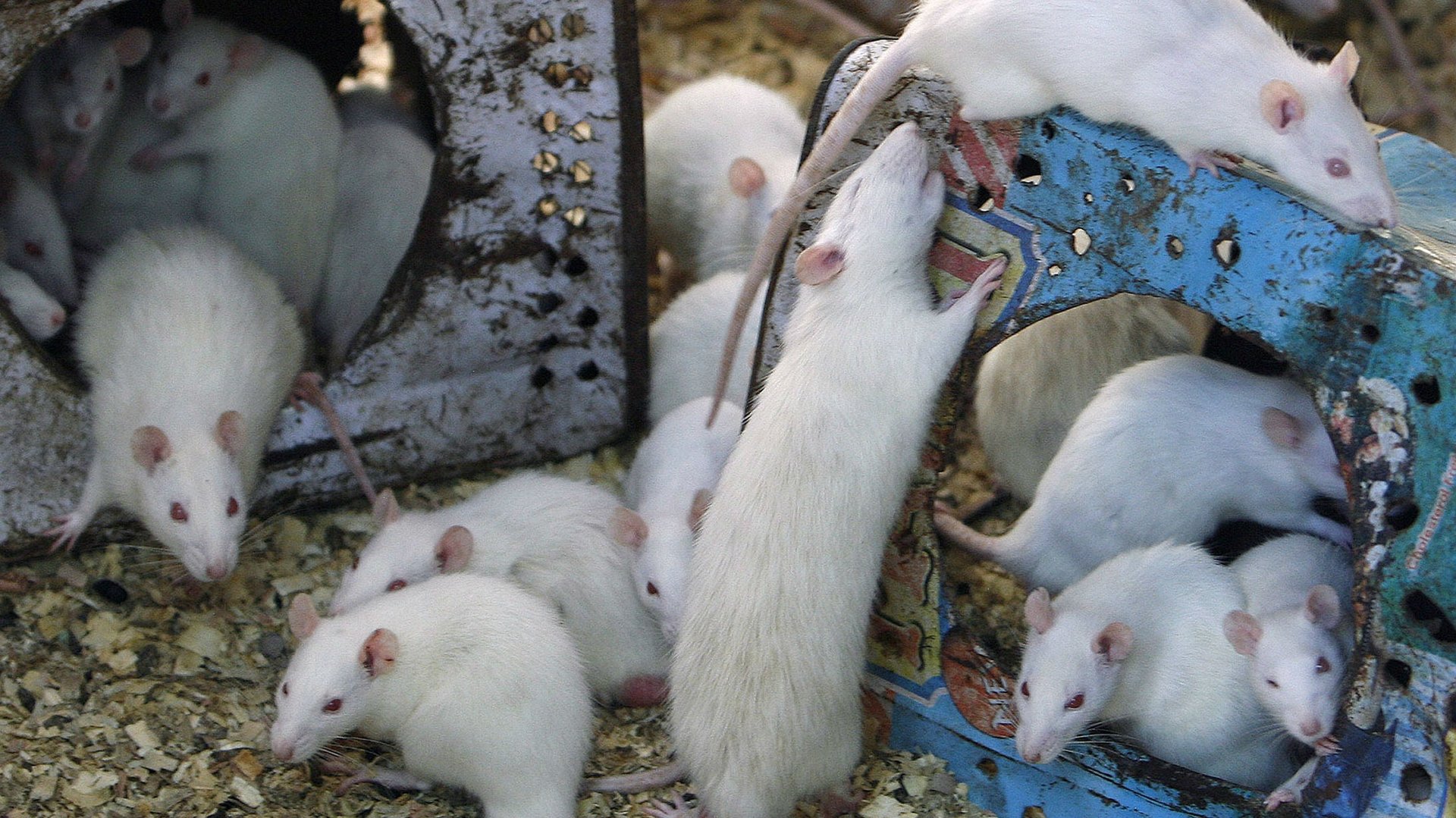The mice of NYC may be contributing to antibiotic resistance
Humans and mice: a dynamic duo as old as civilization itself. Where we thrive, they thrive. Yet the mice living near us may carry genes that contribute to the looming threat of superbugs.


Humans and mice: a dynamic duo as old as civilization itself. Where we thrive, they thrive. Yet the mice living near us may carry genes that contribute to the looming threat of superbugs.
In two side-by-side studies published today (April 17) in the journal mBio, researchers analyzed stool, kidney, and liver samples from over 400 mice living in five residential buildings and two commercial buildings in New York City. They found evidence of pathogens capable of making us sick, and some of the microbial genes capable of making bacteria resistant to certain antibiotics.
For their work, researchers from Columbia University and the US Centers for Disease Control teamed up with a local pest management company to visit seven sites in Manhattan, the Bronx, and Queens. They scouted the trash rooms of large apartment buildings in Laconia, Allerton, the Upper West Side, Chelsea, and Fresh Meadows and the kitchens of commercial buildings in Tremont and Dyker Heights, and collected 416 mice total over the course 13 months between 2014 and 2015.
Then, the team went hunting for microbes. The team took samples of stool and kidney tissue to look for bacterial genes, and liver samples to look for viral genes. In a lab, they replicated and analyzed the genes of all the microbial life they could find.
New York City mice were found to carry all sorts of human diseases. Researchers found evidence of C. difficile, Salmonella, E. coli, Shigella, Klebsiella pneumoniae, Clostridium perfringens and Leptospira—all of which are species of bacteria capable making people sick.
They also found evidence of 22 different bacterial genes capable of turning normally curable infections into superbugs. In total, about 37% of all the mice sampled carried some sort of potentially harmful bacteria, and about a quarter of them carried drug-resistant bacterial genes. Because bacteria reproduce asexually, the bacteria in mice could create a way for superbugs to proliferate.
The researchers didn’t find any viruses known to infect humans. However, they did find viruses that looked like they had jumped from pigs or dogs to mice, meaning that these viruses could conceivably mutate to infect humans, too.
There’s no direct evidence that mice are actively making New Yorkers sick, or actively fostering the development of drug resistant infections. But this work does suggest that that urban mice should be studied further as a potential health risk. If mice in New York are carrying these pathogens and bacterial genes, it’s highly likely that mice in cities all over the world are, too. Meantime, such studies are extra motivation to call an exterminator, or at least get a cat.